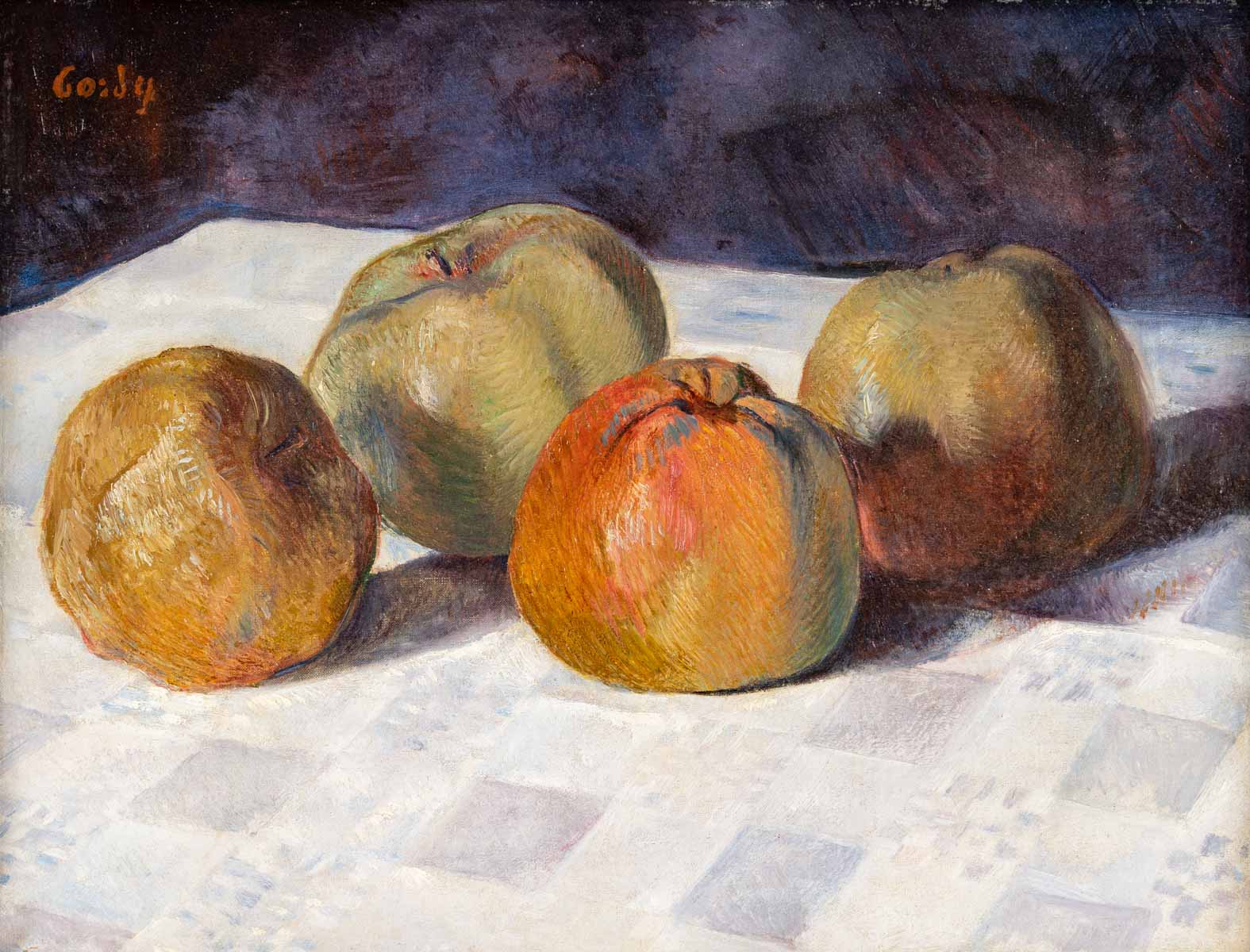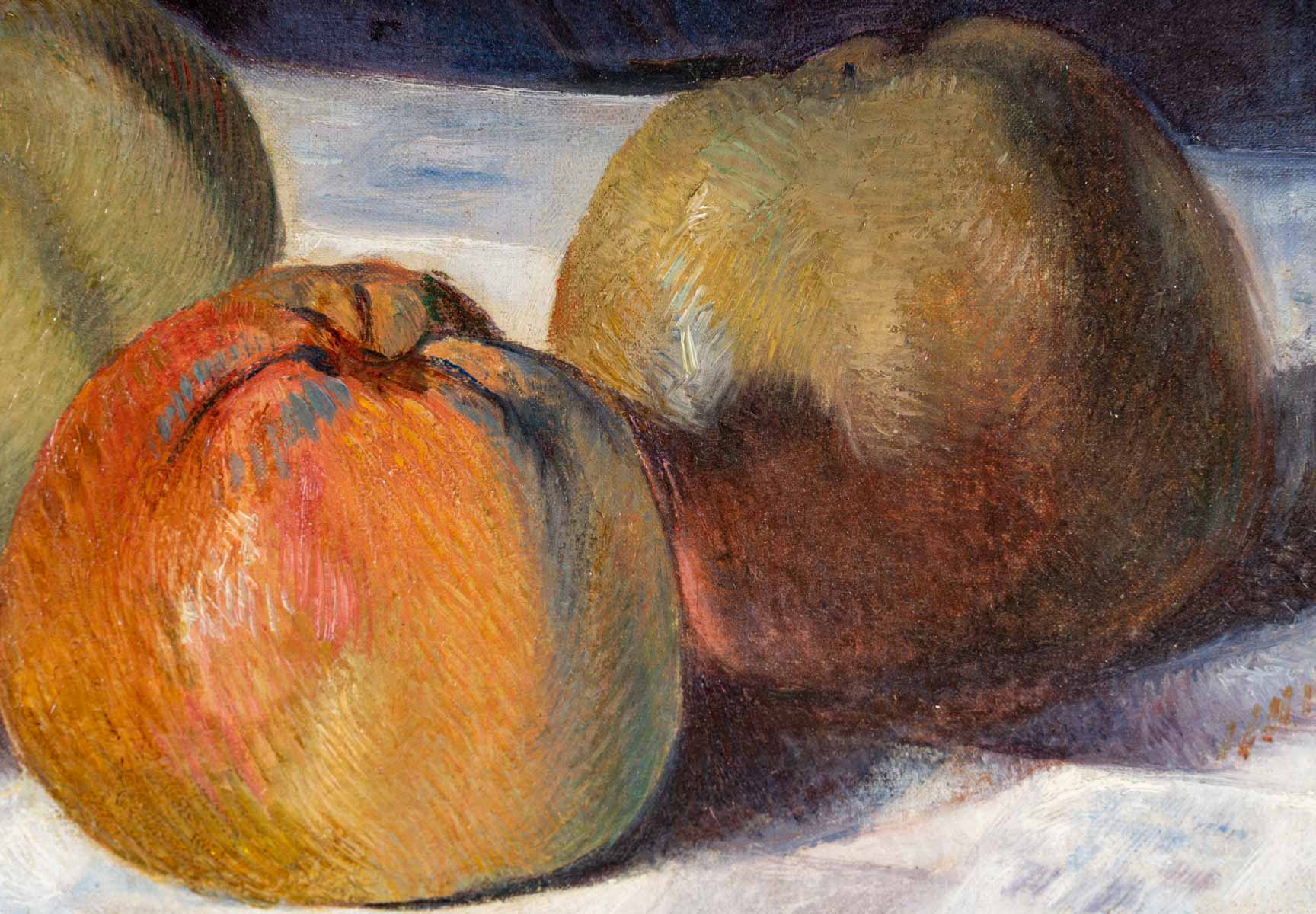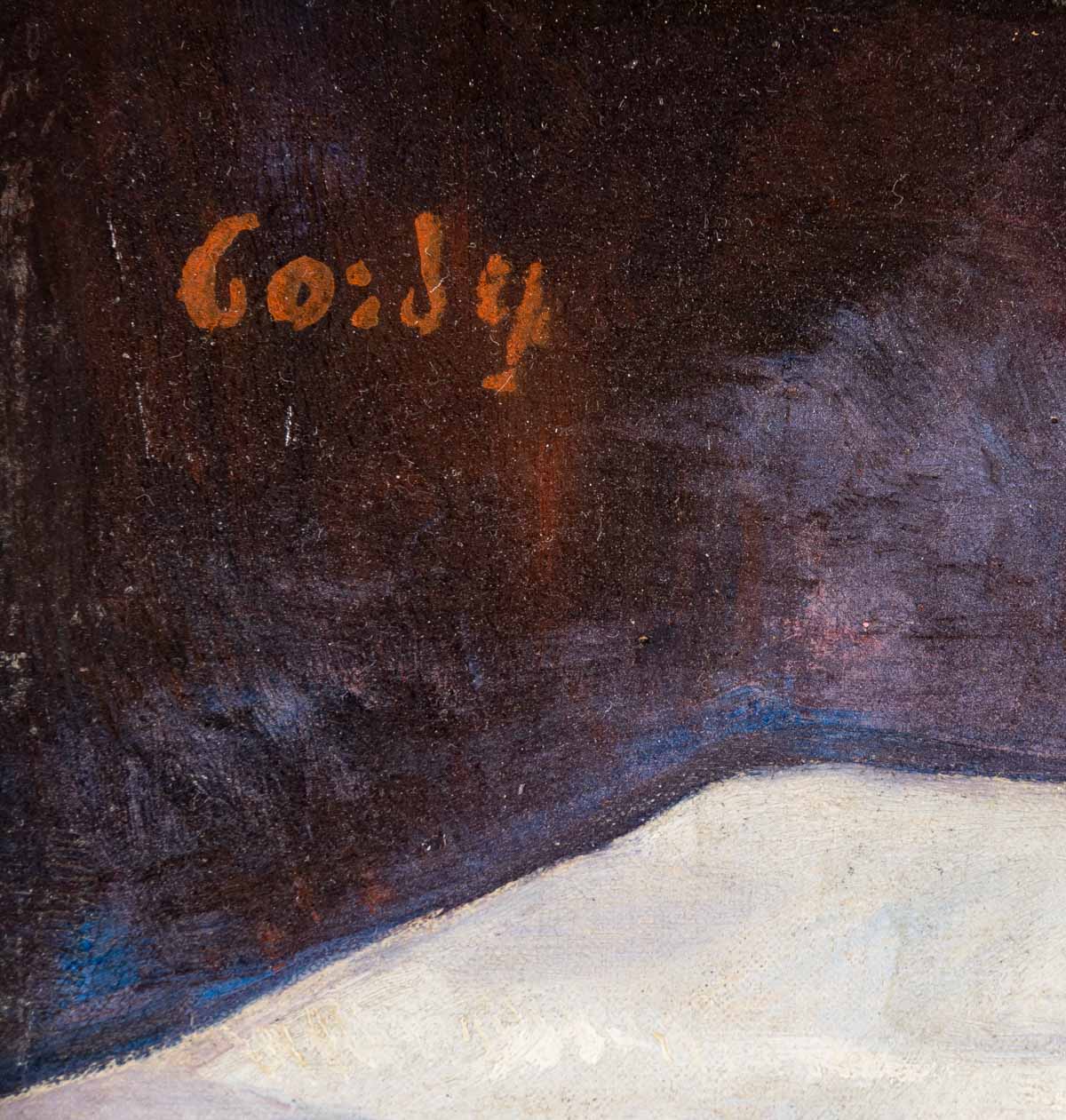Frederic Samuel Cordey
Still life with apples.
Oil on canvas
Sign top left
Dimensions: 27 x 35,5 cm
With frame: 40, 5 x 49 cm
Sold
With a fine, cross-hatched brushstroke, the strokes of which are juxtaposed to each other, Frédéric Samuel Cordey signs a still life vibrant with color and light. The white tablecloth with blue reflections stands out on a black purple background and offers an ideal setting for the apples to rest. These are almond green and red-orange. To these plays of colors, is added a play on the shade and the light; the contrast which emerges from it is seizing.
The workmanship is meticulous, as can be seen in the attention paid by the painter to the design of the damask of the tablecloth on which these slightly inclined apples rest.
Frédéric Samuel Cordey asserts himself as a supporter of color and drawing. The treatment of space is also meticulously ordered. The table, similar to a chess board, cuts the black background obliquely with a broken line. The alignment of the four apples carefully placed underlines this singular geometrical arrangement.
A modernity and timelessness emerges from the canvas.
One thinks of the apples of Cézanne, Courbet or Gauguin…
Frédéric Samuel Cordey evolves with the Impressionists, he presents four paintings with the group for the fourth Impressionist exhibition in 1877.
Pupil of Isodor Pils and Gustave Boulanger at the Ecole des Beaux-Arts in Paris, he was part of the group (Monet, Renoir, Pissarro, Sisley) who rebelled against academic teaching to follow the path of Impressionism. .
The artist took part in the Salon d’Automne in 1903. He rarely exhibits and art critics are rave about him. A retrospective exhibition took place at the Galerie Choiseul in Paris in 1913. His wealth allows him to work according to his own aspirations without depending on criticism and help from merchants.
Appreciated by Gustave Caillebotte and particularly linked to Auguste Renoir, he is featured in several paintings by the artist, including the “Ball of the Moulin de la Galette”. Attentive landscape painter, he likes to depict the surrounding nature; If the Auxerre countryside is one of the painter’s favorite places, he stays not far from Camille Pissarro in Neuville-sur-Oise as well as in Eragny-sur-Oise.
Bibliography :
. Article by Adolphe Thalasso, “Exposition F.-S. Cordey”, in L’Art et les artistes, revue mensuelle d’art ancien et moderne, Oct. 1913-3 Feb. 1914, p. 237
. André Roussard, Dictionary of painters in Montmartre in the 19th and 20th centuries
. Cat. of exp. Christophe Duvivier, Les peintres et l’Oise, les peintres-graveurs de la Vallée de l’Oise, [exhibition ” Les peintres et l’Oise, les peintres-graveurs de la Vallée de l’Oise “, Pontoise, Musée Tavet-Delacour, from Feb. 26 to Sept. 23, 2007], Pontoise éd. du musée, 2007
. Sophie Monneret, L’Impressionnisme et son époque, Paris, Robert Laffont, 1987
Museums :
. Madame Cordey making tapestry, 1879, Paris, Musée d’Orsay.
. Dish of peaches, 1906, Nevers, prefecture of Nièvre.





